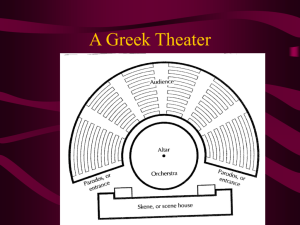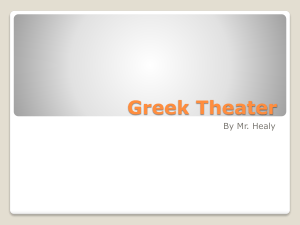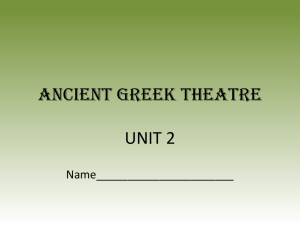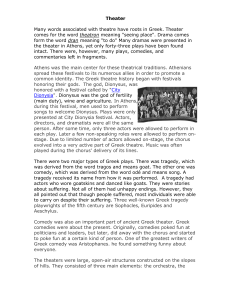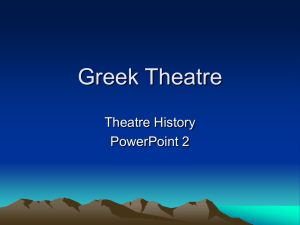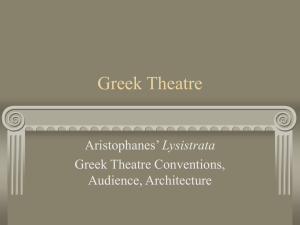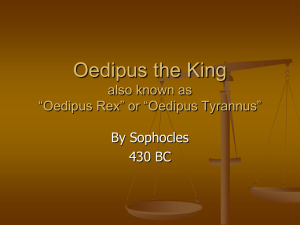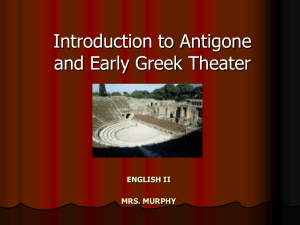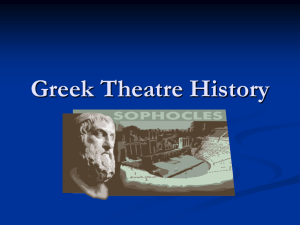Ancient Greek & Roman Theater: Notes on Drama & Acting
advertisement
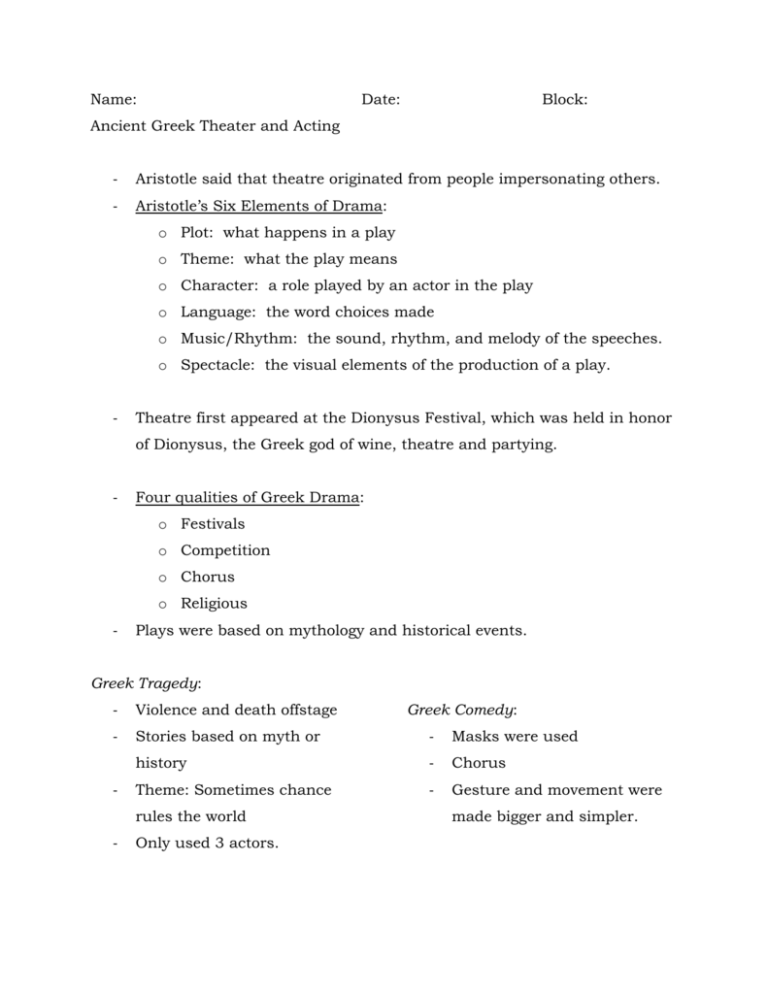
Name: Date: Block: Ancient Greek Theater and Acting - Aristotle said that theatre originated from people impersonating others. - Aristotle’s Six Elements of Drama: o Plot: what happens in a play o Theme: what the play means o Character: a role played by an actor in the play o Language: the word choices made o Music/Rhythm: the sound, rhythm, and melody of the speeches. o Spectacle: the visual elements of the production of a play. - Theatre first appeared at the Dionysus Festival, which was held in honor of Dionysus, the Greek god of wine, theatre and partying. - Four qualities of Greek Drama: o Festivals o Competition o Chorus o Religious - Plays were based on mythology and historical events. Greek Tragedy: Greek Comedy: - Violence and death offstage - Stories based on myth or - Masks were used history - Chorus Theme: Sometimes chance - Gesture and movement were - rules the world - Only used 3 actors. made bigger and simpler. Label the parts of a Greek Theater: Word Bank: Orchestra Skene Parados Theatron Definitions: Orchestra: “dancing place;” circular acting area Skene: a permanent building at the back of the orchestra; represented scenery/setting Parados: the pathway used by the actors and chorus for their entrances and exits. Theatron: “seeing place;” audience seating. Actors and Acting - The first actor was Thespis. He stepped out from the chorus reciting poetry and invented acting. - Acting Styles: o Men played all the parts. No women were allowed to be in the Greek drama. o They used masks. - To make voices louder. To make facial features larger. So each actor could play many parts. The Chorus: o Function To explain the current situation To bring the audience up to date To comment on the action To engage in dialogue with the actors and offer them advice. o Consisted of 3 to 50 men. o Represented citizens of whatever was king in play o Sung and danced o All wore same mask Roman: - 55 B.C.: The first stone theater was built in Rome by the order of Julius Caesar. - Much more entertaining than Greek theatre. - Theatre held at religious festivals. - Festivals were held in honor of the gods, but much less religious than in Greece. Roman Theater Influcences - Greek Drama - Circus-like elements - Farce (short unplanned make-believe situations with stock characters) Forms of Roman Drama - Pantomime o Solo dance with music and chorus o Used masks, story-telling, and mythology and historical stories - Mime o Spoken o No masks o *Women were actors in the mime* o Violence was shown on stage - Tragedy o Interest in morality Goodness, honesty o Violence was shown on stage - Comedy o Based on Greek comedies o Slapstick: broad comedy marked by wild action, as the throwing of pies in actors' faces, mugging, and obvious silly situations and jokes. Parts of a Roman Theater Definitions Scaena: the stage house or building behind the stage; related to the Greek skene Orchestra: semi-circular space between the audience and the stage Cavea: audience seating area; related to the Greek theatron Architecture - First permanent Roman theater was built in 54 A.D. - Had stadium-style seating - The Colosseum was built in 80 A.D. and was three stories tall. Acting and Acting Styles: - Mostly male actors, though women were in mimes. - Mimes were considered lower than actors in status. - Style of Acting: o Tragedy: slow, stately delivery of lines o Comedy: more rapid and conversational delivery of lines o The mimes did not use masks. o Used a chorus in much the same way the Greeks did
